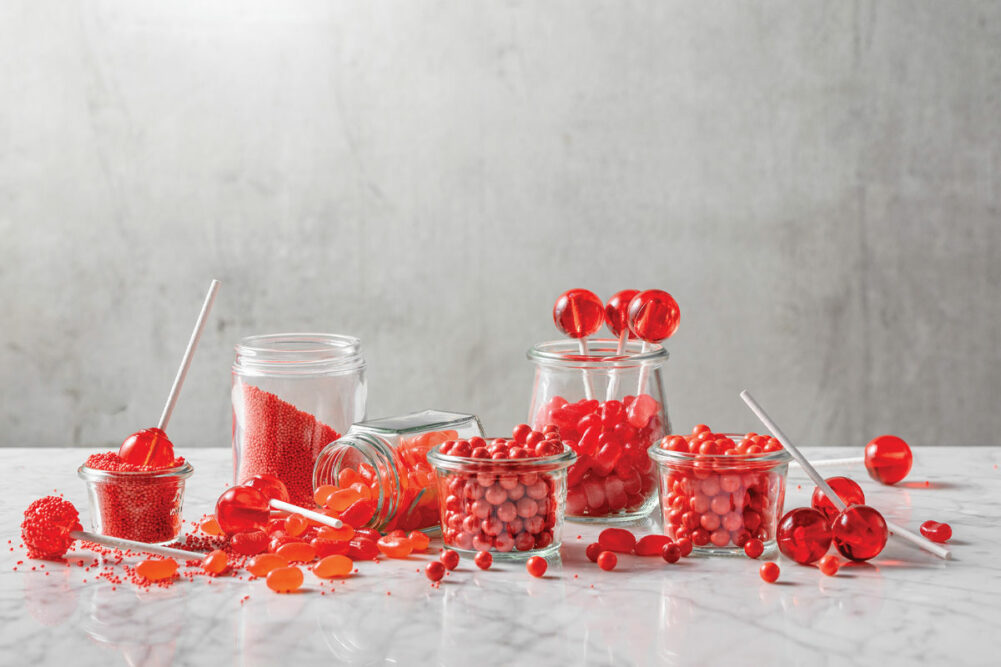KANSAS CITY — Differing food safety laws between the European Union and the United States have given US companies a reason to seek alternatives to titanium dioxide, which provides a bright white color to food. One reason to consider natural alternatives domestically is a bill under consideration in California targeting titanium dioxide and red No. 3, which is used in candy and other applications.
The European Food Safety Authority (EFSA) in 2021 banned titanium dioxide for use as a food additive in the European Union because of genotoxicity concerns. Genotoxicity may lead to carcinogenic effects. The US Food and Drug Administration, however, considers titanium dioxide to be Generally Recognized As Safe (GRAS).
The emerging field of nanotechnology played a role in EFSA’s titanium dioxide decision and may impact other ingredients, said Ilise L. Feitshans, who attended the EFSA titanium dioxidehearings.
The width of a human hair is 100,000 nanometers. Through nanotechnology knowledge may be gained and used to manipulate materials at the atomic, molecular or macromolecular level. Regulations on nanotechnology continue to evolve.
“In that sense, the Europeans are miles ahead of us,” said Dr. Feitshans, an author of nanotechnology reports who received a doctor of international relations from the Geneva School of Diplomacy, a master of science degree from the Johns Hopkins University School of Public Health and a juris doctor from Georgetown University.
Titanium dioxide comes with benefits.
“We’ve been using titanium dioxide for a very long time,” Dr. Feitshans said. “It’s not a new discovery. Titanium dioxide at the nanoscale is really cool if you have really white paint, if you have really fluffy whipped cream.”
Chicago-based ADM offers a PearlEdge portfolio of colors as titanium dioxide alternatives, said Emina Goodman, senior director, colors. ADM creates the colors by using raw materials derived from natural sources like native corn starch. PearlEdge powdered systems work in confections, icings, coatings, and meat and seafood alternatives. PearlEdge liquid emulsions work in beverage applications to mitigate ringing, precipitation sediments and staining.
Sensient Colors, St. Louis, offers an Avalance portfolio of over 30 color systems specifically developed to meet the performance of titanium dioxide in applications ranging from confections to plant-based meat alternatives, said Meghan Skidmore, marketing specialist.
If passed, assembly bill 418 in California, would prohibit the manufacturing, selling, delivering, distributing, holding or offering for sale a food product that contains titanium dioxide or red No. 3 as well as brominated vegetable oil, potassium bromate and propylparaben. Additionally, the Center for Science in the Public Interest last November filed a petition with the FDA proposing the agency repeal the color additive regulations for the use of red No. 3 in foods, including supplements, and in ingested drugs.
Red No. 3, also known as erythrosine, creates hues from hot pink to red bluish, Ms. Goodman said. Common applications are candy, baked foods and dairy items, including ice cream. ADM offers colors from its Colors from Nature portfolio that may be used as red No. 3 alternatives.
GNT Group, Mierlo, The Netherlands, offers Exberry color concentrates that provide a clean label replacement to red No. 3 in most food and beverage applications, said Alice Lee, technical marketing manager for GNT USA, LLC, Dallas, NC.
“They’re made from edible fruits, vegetables and plants using physical, water-based processing methods such as chopping, filtering and boiling,” she said. “This means they can be described on the ingredient list in a way that provides consumers with instant reassurance, such as ‘fruit and vegetable juice for color.’”
Replacing artificial colors with naturally sourced colors is never a 1:1 replacement, she said.
“It tends to be easier to formulate a new color that’s bright and attractive rather than exactly matching the artificial color, although that often depends on the specific application and target hue,” she said. “Some shades such as hot pink, neon orange and intensely red hues can be challenging as a direct replacement. Technical considerations like processing conditions and pH should be considered when working with pink and red concentrates based on anthocyanins from fruit and vegetables.”
Beet-based colors are an option for red and pink, Ms. Skidmore said.
“It may lack the vibrancy formulators expect from red No. 3,” she said. “Formulators should keep in mind that beet is a heat-sensitive color, so if heat processes are used, an engineered solution like Sensient’s SupraRed will be necessary to avoid color degradation or fading.”





